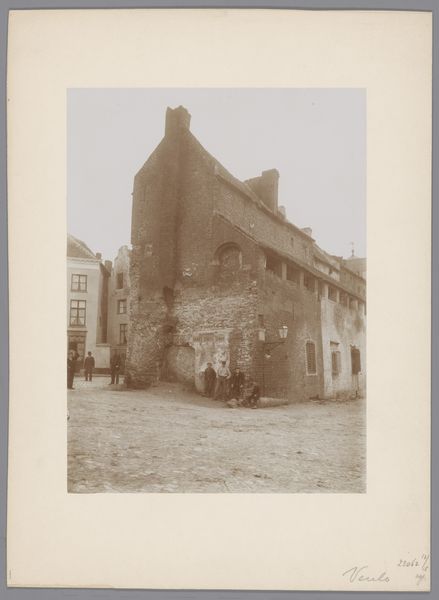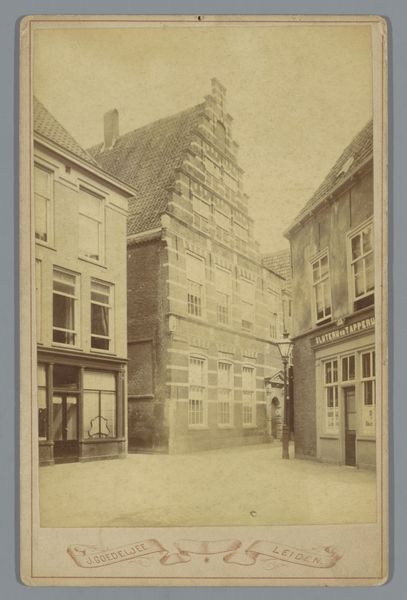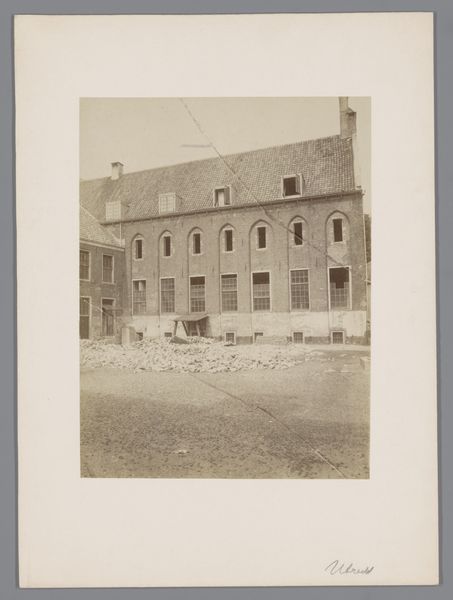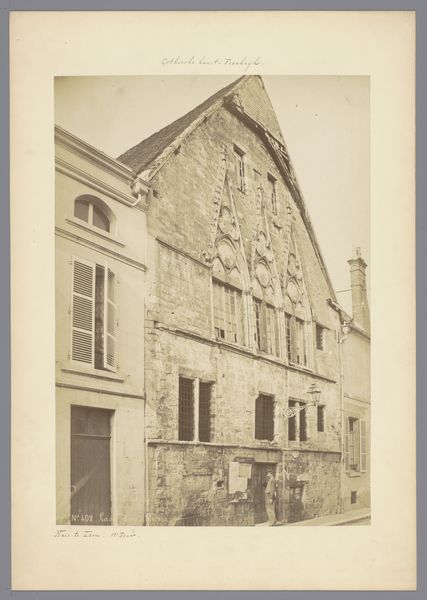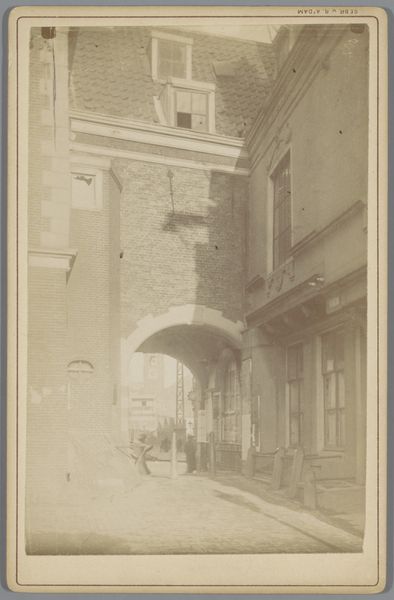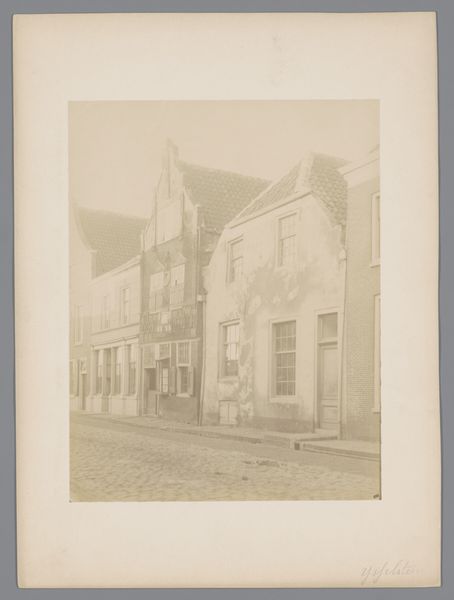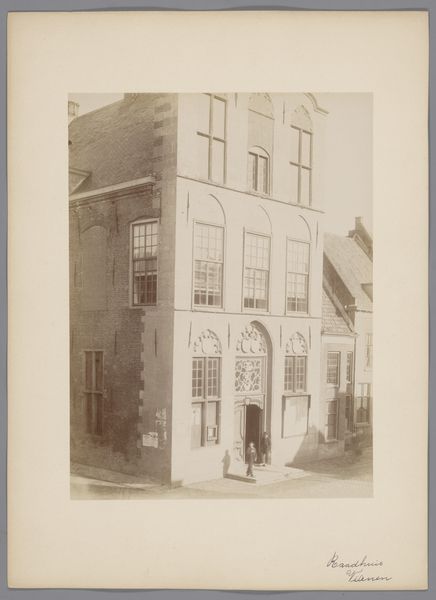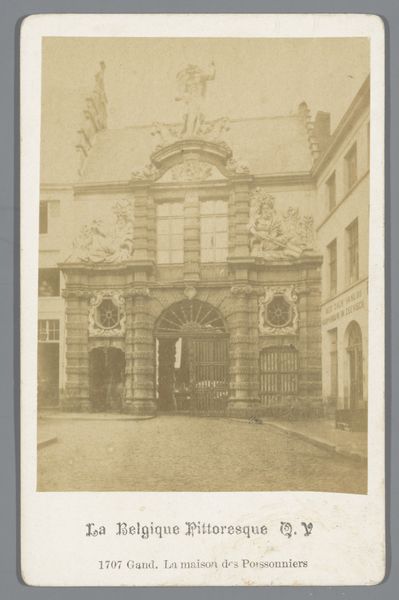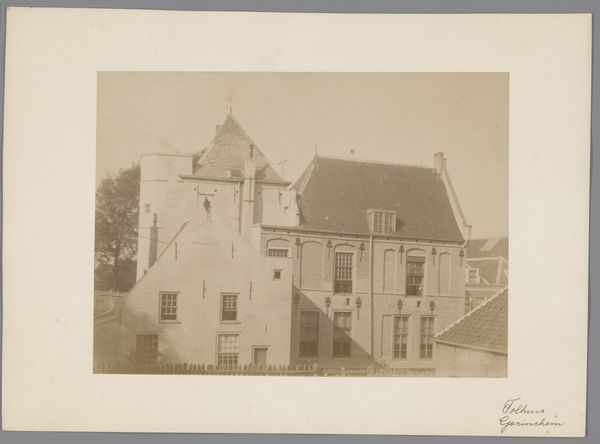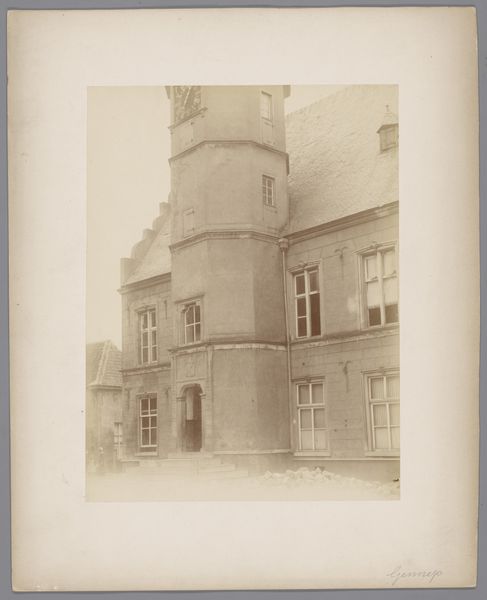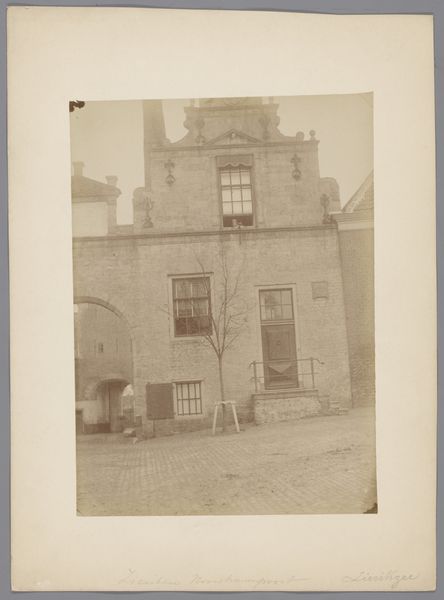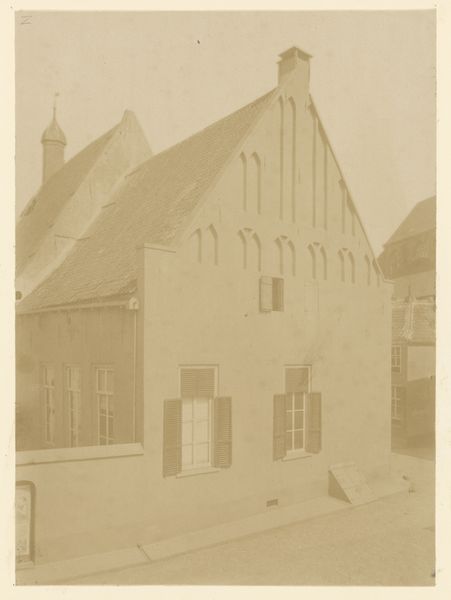
Torens van het Gravensteen omringd door nieuwere bebouwing, Gent 1872 - 1875
0:00
0:00
juleshippolytequeval
Rijksmuseum
photography, gelatin-silver-print
#
photography
#
orientalism
#
gelatin-silver-print
#
cityscape
Dimensions: height 107 mm, width 68 mm
Copyright: Rijks Museum: Open Domain
Curator: Immediately, what strikes me about this gelatin silver print is the rather imposing geometry, an intersection of architectural styles—quite a remarkable interplay of old and new. Editor: It is, indeed. This photograph, taken by Jules Hippolyte Quéval between 1872 and 1875, presents a view of the Gravensteen towers nestled amongst more recent constructions in Ghent. It’s now part of the Rijksmuseum collection. Curator: The tonal range, while limited, is quite effective at conveying a sense of mass. The dark aperture of the gate contrasts beautifully with the lighter stonework, drawing the eye inward, don’t you think? Editor: Certainly, and considering the period, photography was actively trying to demonstrate it could stand amongst traditional landscape painting and portraiture. The perspective deliberately sets the ancient architecture alongside contemporary life, illustrating societal changes occurring in Ghent during this era. Curator: There is a real sense of capturing a moment in time, or even pausing time, which I can not help to observe considering the tonal graduation of blacks, greys and whites, offering a structured hierarchy within the picture plane. What impact this image have at its time, or in later ones, concerning new audiences for photography? Editor: I find the implicit question of conservation and how past shapes the future rather central in its understanding; it was used by some organisations to preserve the site against any other major reconstructions. By that way, photography, besides providing visual structure and experience, helped on socio-political debates that would happen between the nineteenth and the twentieth century. Curator: Quite fascinating. The interplay between formal values and cultural impact gives us rich insight of that time, don't you agree? Editor: Agreed. It gives me a refreshed perspective when analysing art history with structure.
Comments
No comments
Be the first to comment and join the conversation on the ultimate creative platform.
